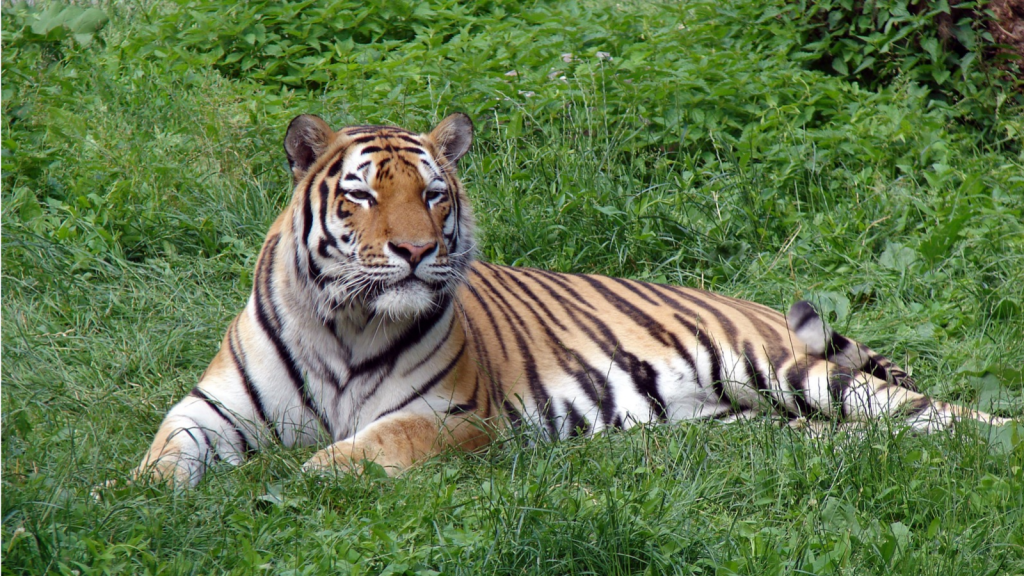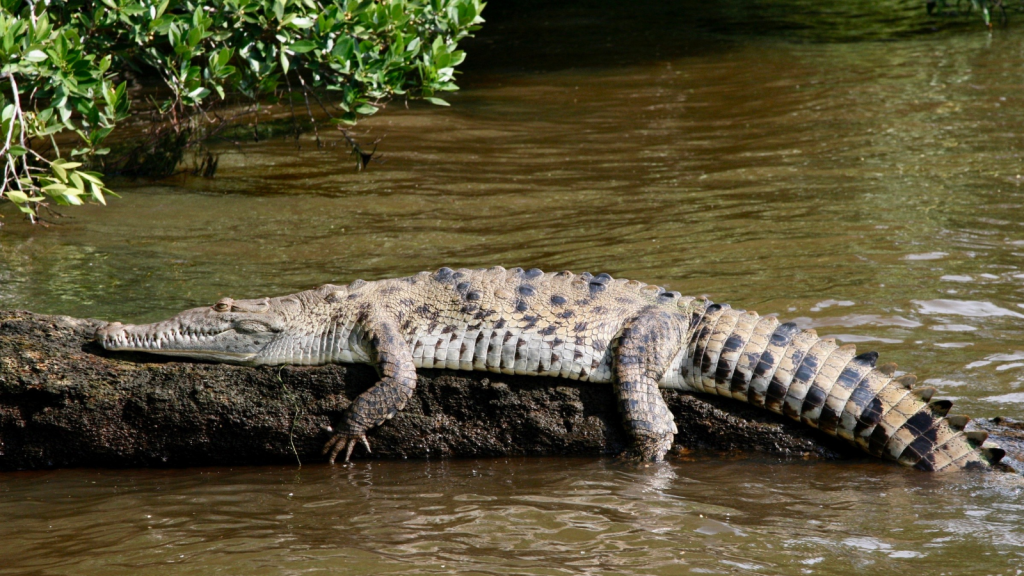Nature never ceases to amaze us with its incredible creatures. Among the most fascinating are the clever hunters that roam our planet. These animals have evolved remarkable abilities to outsmart their prey and survive in challenging environments. From problem-solving skills to cooperative hunting techniques, these predators showcase nature’s ingenuity at its finest. Join us as we explore the brilliant minds behind some of the world’s most impressive hunters. You might be surprised by which animals made the list!
African Elephants

African elephants are gentle giants with impressive problem-solving skills. These massive creatures use tools, show empathy, and even mourn their dead. Their intelligence allows them to remember migration routes and water sources across vast distances, making them formidable survivors in the wild. Elephants have also been observed using their trunks to create makeshift fly swatters, demonstrating their ability to innovate and adapt.
Chimpanzees

Our closest relatives in the animal kingdom, chimpanzees are master tool users. They craft spears for hunting, use leaves as sponges to drink water, and even engage in complex social politics within their groups. Their ability to learn and adapt makes them one of the smartest predators in the forest. Chimpanzees have also been observed teaching their young how to use tools, passing on their knowledge to future generations.
Bottlenose Dolphins

Bottlenose dolphins are renowned for their playful nature and high intelligence. They use echolocation to hunt fish and can remember the unique whistles of other dolphins for years. These marine mammals also display self-awareness and have been observed using sponges as tools to protect their snouts while foraging. Dolphins have been known to create bubble rings for entertainment, showcasing their capacity for play and creativity.
Octopuses

These eight-armed wonders of the sea are incredibly smart for invertebrates. Octopuses can solve puzzles, use tools, and even mimic other sea creatures to avoid predators. Their ability to change colour and texture in an instant helps them become master hunters and escape artists. Octopuses have been observed unscrewing jar lids to access food, demonstrating their problem-solving abilities and dexterity.
Ravens

Often overlooked, ravens are among the most intelligent birds on Earth. They can solve complex problems, use tools, and even plan for the future. Ravens have been observed dropping nuts onto roads for cars to crack open, showcasing their resourcefulness in finding food. These clever birds can also recognise human faces and hold grudges against those who have wronged them.
Orcas

Also known as killer whales, orcas are apex predators with remarkable hunting strategies. They work together to create waves that wash seals off ice floes and teach these techniques to their young. Orcas have even been observed beaching themselves temporarily to catch prey on shore. Different orca populations have developed unique dialects and hunting techniques, highlighting their cultural learning abilities.
Tigers

These striped big cats are not just powerful, but also incredibly smart. Tigers can mimic the calls of other animals to lure prey and have excellent problem-solving skills. They’re also strong swimmers, using water to their advantage when hunting. Tigers have been known to cover their urine to avoid detection by prey, demonstrating their strategic thinking abilities.
Polar Bears

As the Arctic’s top predators, polar bears have developed clever hunting techniques. They’ve been observed using tools like ice and rocks to kill their prey. Their patience and strategic thinking make them formidable hunters in one of the world’s harshest environments. Polar bears have also been known to cover their black noses with their paws while stalking prey, showing their understanding of camouflage.
African Grey Parrots

While not typically thought of as predators, African grey parrots are opportunistic omnivores with remarkable intelligence. They have the problem-solving skills of a 5-year-old child and can learn human words and phrases, making them excellent communicators. These parrots have demonstrated the ability to understand the concept of zero, a feat previously thought to be unique to humans and primates.
Raccoons

These masked bandits are more than just bin raiders. Raccoons have excellent problem-solving skills and can remember solutions to tasks for up to three years. Their adaptability and clever nature make them successful urban predators. Raccoons have been observed washing their food before eating, a behaviour that may help them gather more sensory information about their meal.
Honey Badgers

Don’t let their size fool you – honey badgers are fierce and intelligent predators. They’ve been observed using tools to climb trees and even teaming up with birds to find beehives. Their resourcefulness and tenacity make them formidable hunters. Honey badgers have been known to use their environment to their advantage, such as rolling in sand to protect themselves from bee stings.
Coyotes

Highly adaptable and smart, coyotes have thrived despite human expansion. They’ve been known to work in teams to distract larger animals, allowing others to sneak in for the kill. Their ability to learn and adapt to new environments makes them successful predators. Coyotes have been observed timing their hunts with traffic patterns in urban areas, showcasing their ability to learn from human behaviour.
Great White Sharks

These ocean predators are more than just powerful swimmers. Great white sharks have been observed working together to hunt and can learn from each other. They use complex hunting strategies, including spy-hopping to locate seals on the surface. These sharks have been known to bump and investigate unfamiliar objects in their environment, demonstrating their curiosity and learning capabilities.
Komodo Dragons

The largest lizards on Earth, Komodo dragons are patient and clever hunters. They can remember the location of their prey for days and use ambush tactics to catch much larger animals. Their venomous bite and strong sense of smell make them formidable predators. Komodo dragons have been observed using their tails as decoys to lure prey, showcasing their strategic hunting abilities.
African Lions

Known as the kings of the jungle, lions are social predators with impressive hunting strategies. They work together to bring down prey much larger than themselves and use the terrain to their advantage. Lions have even been observed using bait to lure in unsuspecting animals. Male lions have been known to roar in duets to intimidate rivals, demonstrating their understanding of teamwork and communication.
Crocodiles

These ancient predators have survived for millions of years thanks to their intelligence. Crocodiles have been observed using twigs as bait to lure birds and can work together to herd fish into shallow waters. Their patience and strategic thinking make them successful ambush predators. Crocodiles have been known to carry their young in their mouths to protect them, showing a level of parental care not often associated with reptiles.
Red Foxes

Clever and adaptable, red foxes are known for their problem-solving skills. They can remember the locations of hundreds of food caches and have been observed using magnetic fields to hunt. Their ability to thrive in both rural and urban environments showcases their intelligence. Red foxes have been known to use their tails as warm blankets in cold weather, demonstrating their resourcefulness in harsh conditions.
Leopards

These spotted cats are not just agile climbers but also clever hunters. Leopards have been known to imitate the calls of their prey to lure them closer. Their problem-solving skills and adaptability make them successful predators in various habitats. Leopards have been observed caching their kills high up in trees to protect them from other predators, showing their ability to plan ahead.
15 Facts About the Honey Badger, the Fiercest Animal in Africa

The honey badger, a small but mighty creature, roams the African wilderness with a fearless attitude that’s earned it quite a reputation. These tenacious animals have captured the imagination of wildlife enthusiasts and casual observers alike. Despite their name, honey badgers aren’t closely related to European badgers and are more akin to weasels and otters. Their tough-as-nails approach to life and remarkable abilities have made them the stuff of legend. Let’s explore some fascinating facts about these extraordinary creatures that prove why they’re considered Africa’s fiercest animals.
Read More: 15 Facts About the Honey Badger, the Fiercest Animal in Africa
Becky is a fervent wildlife enthusiast and pet care expert with a diploma in canine nutrition. Her love for animals stretches beyond the domestic, embracing the wild tapestry of global fauna. With over a decade of experience in animal welfare, Becky lends her expertise to OutlandishOwl through insightful articles, captivating wildlife information, and invaluable guidance on pet nutrition. Her work embodies a deep commitment to understanding the intricate lives of animals and a passion for educating others on sustaining natural habitats. Becky's hands-on conservation efforts and her knack for translating complex dietary science into practical pet feeding tips make her an indispensable voice for creatures great and small.




